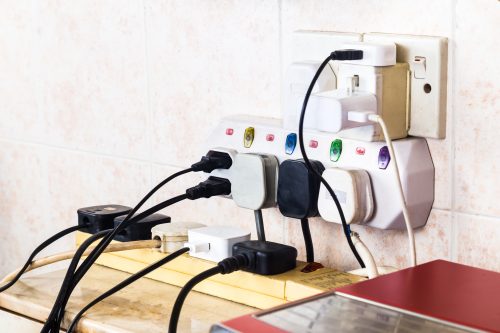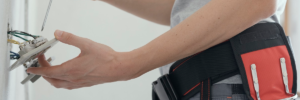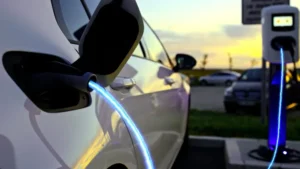Introduction
In this article, we will explore the topic of hot circuit breakers and the reasons behind their occurrence. Circuit breakers play a crucial role in electrical safety by protecting our homes and devices from electrical overloads. However, when a circuit breaker becomes hot, it raises concerns about potential issues and hazards.
Let’s delve into the world of circuit breakers and uncover the mysteries of why they sometimes become hot.
Why Is My Circuit Breaker Hot?
Understanding Circuit Breakers
A circuit breaker serves as a crucial component in electrical systems, ensuring the safety and protection of both the electrical wiring and connected devices. This section will provide a clear understanding of circuit breakers and their significance in our daily lives.
What is a Circuit Breaker?
In simple terms, a circuit breaker is an electrical switch designed to automatically interrupt the flow of electrical current when it exceeds a safe level. Its primary function is to protect the circuit from overloading, short circuits, and other electrical faults. By cutting off the power supply, a circuit breaker prevents damage to the wiring and appliances and reduces the risk of electrical fires.
How does a Circuit Breaker work?
To comprehend why a circuit breaker can become hot, it is essential to grasp its operating principle. When an excessive current flows through a circuit, the electromagnet within the circuit breaker becomes energized. This energization triggers a mechanical mechanism, causing the circuit breaker’s contacts to open, thus interrupting the current flow.
The circuit breaker comprises two main components: the bimetallic strip and the electromagnet. The bimetallic strip is made of two different metals with different expansion rates. When exposed to high current, the strip heats up and bends, mechanically opening the circuit breaker. The electromagnet, on the other hand, senses the strength of the current passing through the circuit and triggers the opening of the contacts when the current exceeds a specific threshold.
Importance of Circuit Breaker ratings
Circuit breakers are available in various sizes and ratings, each designed to handle specific electrical loads. It is crucial to understand the importance of circuit breaker ratings to ensure their effective operation and prevent overheating. The rating of a circuit breaker specifies the maximum current it can safely handle without tripping.
Choosing the appropriate circuit breaker rating for a given circuit is essential. Underrated breakers can lead to frequent tripping, while overrated breakers may fail to protect the circuit adequately. By adhering to the correct ratings, the circuit breaker can operate within its designed limits, minimizing the risk of overheating and improving electrical safety.
Common types of Circuit Breakers
There are several types of circuit breakers commonly used in residential and commercial applications. This section will briefly highlight the most prevalent types:
- Standard circuit breakers: These are the most common type, available in single-pole and double-pole configurations. They provide protection for various circuits and devices in residential and commercial settings.
- Ground Fault Circuit Interrupters (GFCIs): GFCIs are specialized circuit breakers designed to protect against ground faults and electrical shocks. They are commonly used in areas with water exposure, such as kitchens, bathrooms, and outdoor outlets.
- Arc Fault Circuit Interrupters (AFCIs): AFCIs are designed to detect and mitigate the risk of electrical fires caused by arcing faults. They provide enhanced protection against electrical hazards, such as loose connections and damaged wiring.
Understanding the different types of circuit breakers helps in identifying the specific type installed in a circuit and enables appropriate troubleshooting and maintenance practices.
Recognizing the Signs of a Hot Circuit Breaker
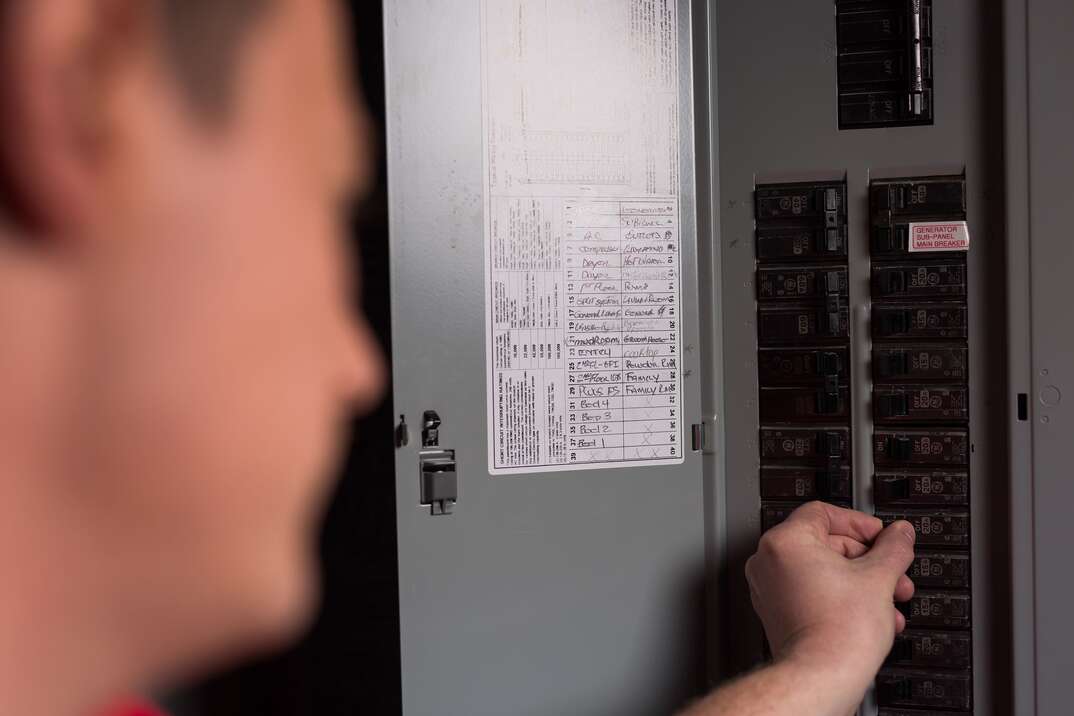
Being able to identify the signs of a hot circuit breaker is crucial for maintaining electrical safety in our homes and workplaces. This section will focus on the indicators that can help us recognize a hot circuit breaker and take prompt action.
Explanation of why a Circuit Breaker might become hot
Before delving into the signs, it is important to understand why a circuit breaker may become hot. The primary cause is excessive heat generated by an overload or fault in the electrical circuit. When a circuit is overloaded with more current than it can handle, the circuit breaker experiences increased resistance, leading to heat buildup.
Common Signs of a Hot Circuit Breaker
Recognizing the signs of a hot circuit breaker can prevent potential hazards and ensure early intervention. Here are some common indicators to watch out for:
- Excessive heat: If the circuit breaker feels unusually hot to the touch, it may be an indication of overheating. Exercise caution when assessing the temperature and avoid direct contact to prevent burns.
- Burning smell: A distinct burning odor near the circuit breaker panel or electrical outlet could suggest overheating. It is important to investigate the source promptly and take appropriate action.
- Tripped circuit breaker: If the circuit breaker frequently trips, especially when there is no apparent overload or fault, it could be a sign of overheating. Tripping occurs when the breaker senses excessive heat and interrupts the current flow.
- Buzzing or humming sounds: Unusual sounds emanating from the circuit breaker panel, such as buzzing or humming, can indicate excessive electrical activity and potential overheating.
Importance of Promptly Addressing a Hot Circuit Breaker
Addressing a hot circuit breaker promptly is crucial for preventing further damage and ensuring electrical safety. Ignoring the signs of a hot circuit breaker can lead to more severe issues, such as electrical fires, equipment damage, or even electrical shocks. By taking immediate action, the underlying cause can be identified and resolved, restoring the circuit’s normal operation and reducing the risk of accidents.
Causes of a Hot Circuit Breaker
Understanding the causes of a hot circuit breaker is crucial for troubleshooting and addressing the issue effectively. This section will explore the potential reasons behind a circuit breaker becoming hot, including both common and less frequent causes.
Overloading the Circuit
One of the primary causes of a hot circuit breaker is overloading. This occurs when the electrical circuit carries more current than it can handle. Overloading can happen due to excessive use of electrical devices or the connection of high-power appliances to a circuit not designed to accommodate them. The increased current generates heat, leading to the circuit breaker becoming hot in an attempt to protect the circuit from damage.
Loose Electrical Connections
:max_bytes(150000):strip_icc()/SPR-wire-connection-problems-and-solutions-1152877-01_30054-d2cf09aa509d4a4c9c13a7384b461a96.jpg)
Loose electrical connections within the circuit can also contribute to a hot circuit breaker. Loose wires or terminals create resistance, which leads to increased heat generation. Over time, the heat can accumulate and cause the circuit breaker to become hot. Loose connections may result from poor installation, aging components, or vibration in the electrical system.
Faulty Wiring
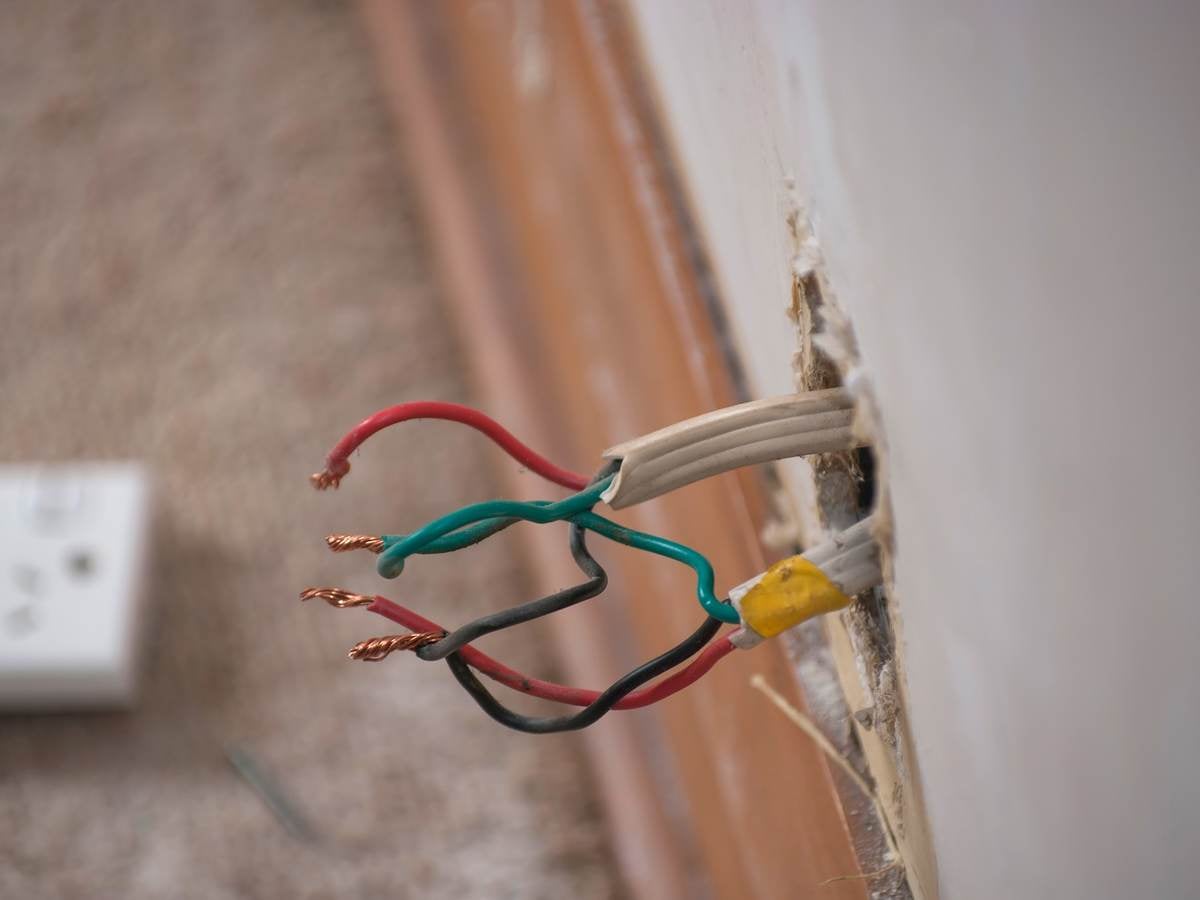
Faulty wiring poses a significant risk of overheating circuit breakers. Wiring issues, such as damaged insulation, frayed wires, or improper connections, can cause resistance and create hot spots within the circuit. These hot spots lead to excessive heat buildup, eventually affecting the circuit breaker. Faulty wiring can be caused by factors like aging, wear and tear, rodents, or improper installation.
Short Circuits

Short circuits occur when two electrical conductors come into direct contact, bypassing the resistance of the circuit. This results in an abrupt increase in current flow and can lead to a hot circuit breaker. Short circuits often stem from damaged or frayed wires, loose connections, or faulty electrical devices. The high current causes the circuit breaker to trip and may cause it to become hot in the process.
Damaged or Worn-out Circuit Breaker
/safely-install-a-circuit-breaker-1152745-hero-412238e225a44536970a138ba2c57de6.jpg)
A damaged or worn-out circuit breaker itself can contribute to overheating. Circuit breakers are designed to withstand a specific range of electrical currents and operating conditions. Over time, they may deteriorate due to age, excessive use, or internal faults. When a circuit breaker is compromised, it may not function properly, leading to increased resistance and heat generation.
Other Potential causes of a Hot Circuit Breaker
In addition to the aforementioned causes, there are other factors that can contribute to a hot circuit breaker. These include:
- Environmental factors: High ambient temperatures, inadequate ventilation around the circuit breaker panel, or proximity to heat sources can all contribute to the overheating of a circuit breaker.
- Voltage fluctuations: Rapid or extreme voltage fluctuations can strain the circuit breaker and cause it to become hot.
- Manufacturing defects: In rare cases, circuit breakers may have manufacturing defects or design flaws that lead to excessive heat generation.
Troubleshooting and Solutions
When faced with a hot circuit breaker, it is essential to take appropriate troubleshooting steps to identify and address the underlying issue. This section will provide a systematic approach to troubleshooting a hot circuit breaker and offer potential solutions.
Safety Precautions before Troubleshooting
Before proceeding with any troubleshooting, it is crucial to prioritize safety. Follow these precautions:
- Turn off the power: Before inspecting or working on the circuit breaker panel, switch off the main power supply to ensure your safety.
- Use appropriate protective gear: Wear safety gloves and goggles to protect yourself from potential electrical hazards.
- Do not touch hot components: Avoid direct contact with a hot circuit breaker or any other overheating electrical components to prevent burns.
Steps to Troubleshoot a Hot Circuit Breaker
To effectively troubleshoot and address a hot circuit breaker, follow these steps:
Step 1: Turn off the Power
Ensure the power to the circuit breaker panel is switched off by turning off the main circuit breaker or the corresponding circuit breaker for the affected circuit. This step ensures your safety and prevents electrical shocks during the troubleshooting process.
Step 2: Inspect for Overloading and Unplug Devices
Check for overloading by identifying the devices and appliances connected to the circuit. Unplug any unnecessary devices that may be contributing to the excessive current draw. Ensure that the electrical load is within the circuit breaker’s rated capacity.
Step 3: Check for Loose Connections
Inspect the circuit breaker panel for loose electrical connections. Carefully examine the wiring connections at the circuit breaker terminals, neutral bus, and ground bus. Tighten any loose connections using an appropriate screwdriver or consult a qualified electrician for assistance.
Step 4: Examine for Faulty Wiring
Carefully inspect the wiring within the circuit for signs of damage, such as frayed insulation, exposed wires, or burnt marks. If faulty wiring is identified, it should be repaired or replaced by a professional electrician to ensure safe operation.
Step 5: Investigate for Short Circuits
Check for any signs of short circuits, such as burnt or charred wiring, tripped circuit breakers, or visible sparks. Carefully examine the electrical devices and outlets connected to the circuit. If a short circuit is suspected, it is recommended to consult a licensed electrician to rectify the issue.
Step 6: Assess the condition of the circuit breaker
Inspect the circuit breaker itself for signs of damage, such as melted components, discoloration, or unusual smells. If any visible defects are detected, it is advisable to replace the circuit breaker with a new one of the same rating. Remember to follow proper procedures and consult an electrician if necessary.
Step 7: Consult a Professional Electrician if needed
If the troubleshooting steps mentioned above do not resolve the issue or if you are unsure about handling electrical components, it is recommended to seek assistance from a qualified electrician Woodstock, GA. They have the expertise and tools to diagnose and address complex electrical problems safely.
Preventive Measures and Maintenance
Preventing hot circuit breaker issues is essential for maintaining electrical safety and avoiding potential hazards. This section will highlight the importance of preventive measures and provide maintenance tips to keep your circuit breakers in optimal condition.
Importance of Preventive Measures
Taking proactive steps to prevent hot circuit breaker issues is crucial for the overall safety and functionality of your electrical system. By implementing preventive measures, you can minimize the risk of overloading, faulty wiring, and other common causes of hot circuit breakers. This not only ensures the smooth operation of your electrical system but also extends the lifespan of your circuit breakers and helps avoid costly repairs or replacements.
Regular Maintenance of Circuit Breakers
Performing regular maintenance on your circuit breakers is an effective way to identify potential issues and prevent them from escalating into hot circuit breaker problems. Here are some maintenance tips to consider:
- Visual inspection: Periodically inspect the circuit breaker panel for any signs of damage, such as loose connections, frayed wires, or burnt marks. If any abnormalities are found, consult a qualified electrician for further assessment and repairs.
- Keep the panel clean: Dust and debris accumulation can hinder the proper functioning of circuit breakers. Regularly clean the circuit breaker panel using a dry cloth or a gentle vacuum cleaner to remove any dirt or debris.
- Ensure proper ventilation: Adequate ventilation around the circuit breaker panel is essential to dissipate heat effectively. Avoid obstructing the panel with objects and ensure sufficient airflow to prevent overheating.
- Test the circuit breakers: Periodically test the functionality of the circuit breakers by performing a trip test. Follow the manufacturer’s instructions or consult an electrician for guidance on conducting the test safely.
Tips for Preventing Circuit Breaker Overheating
To prevent circuit breaker overheating, consider implementing the following tips:
- Proper load management: Avoid overloading circuits by distributing the electrical load evenly across multiple circuits. Be mindful of the power requirements of appliances and devices to ensure they are connected to appropriate circuits.
- Avoid using extension cords excessively: Over-reliance on extension cords can strain circuits and increase the risk of overloading. Whenever possible, connect devices directly to outlets or consider installing additional outlets if needed.
- Upgrade outdated wiring: If your home or building has outdated wiring, consider upgrading it to meet current electrical standards. Aging wiring can be prone to damage and may contribute to hot circuit breaker issues.
- Install surge protectors: Utilize surge protectors to safeguard sensitive electronic devices from power surges. Power surges can stress the circuit breaker and lead to overheating, so investing in surge protection can help mitigate these risks.
- Schedule professional inspections: Periodically engage a licensed electrician to conduct thorough inspections of your electrical system. They can identify potential issues, perform necessary repairs, and offer expert advice on maintaining electrical safety.
Frequently Asked Questions
This section aims to address common questions and concerns related to hot circuit breakers. By providing informative answers, readers can gain a better understanding of the topic and find solutions to their queries.
- Can a hot circuit breaker cause a fire?
A hot circuit breaker can indeed increase the risk of a fire. When a circuit breaker becomes hot, it is an indication of excessive heat generated by an overloaded circuit or other electrical faults.
- How can I determine if my circuit breaker is overloaded?
Determining if a circuit breaker is overloaded requires understanding the electrical load on the circuit. Here’s how you can assess if a circuit is overloaded:
-
- Calculate the total wattage: Add up the wattage of all the devices and appliances connected to the circuit. This information can typically be found on the devices themselves or in their user manuals.
- Check the circuit breaker rating: Compare the total wattage to the circuit breaker’s amperage rating. If the total wattage exceeds the circuit breaker’s rating, it is likely overloaded.
- Monitor for tripping: If the circuit breaker frequently trips or if you notice flickering lights when certain devices are in use, it may indicate an overload.
- Is it safe to reset a hot circuit breaker?
No, it is not safe to reset a hot circuit breaker. A hot circuit breaker is an indication of an underlying issue, such as overloading, loose connections, or faulty wiring. Resetting a hot circuit breaker without addressing the root cause can lead to further problems, such as electrical fires or equipment damage.
- Can a hot circuit breaker damage my electrical appliances?
Yes, a hot circuit breaker can potentially damage electrical appliances. When a circuit breaker becomes hot, it indicates excessive heat, which can affect the wiring and connections of the electrical circuit.
- Can I replace a circuit breaker myself?
Replacing a circuit breaker requires knowledge of electrical systems and safety precautions. While some minor tasks, like replacing a tripped breaker with the same rating, can be done by homeowners, it is generally recommended to seek the assistance of a licensed electrician.
- Why does my circuit breaker get hot when I use certain appliances?
A circuit breaker can become hot when using certain appliances due to a higher electrical load on the circuit. Some appliances, such as air conditioners, electric heaters, or high-powered tools, require a significant amount of electrical current to operate.
Conclusion
In conclusion, understanding why a circuit breaker becomes hot is essential for maintaining electrical safety in our homes and workplaces. By following the troubleshooting steps outlined in this article and implementing preventive measures, we can prevent hot circuit breaker issues and minimize the risk of electrical hazards.
What To Do
If your circuit breaker starts to overheat and you suspect it is tripping, turn off the power manually.
To do this, set the main switch to the off position. This will turn off all electrical circuits in your home. Call your local electrician on your phone to have your breaker box checked and serviced.
A little heat is normal, but too much can cause serious problems in your home. If your home’s circuit breaker starts to overheat and trip, contact Poss Electic’s experienced electricians in Woodstock, Georgia.
To learn more or to schedule residential electrical service, call us at (770) 741-1878.
